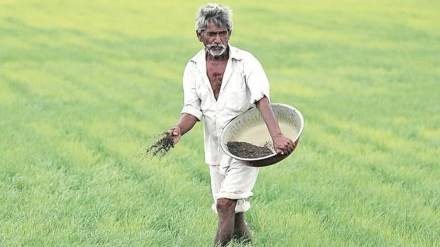The government will soon add 21 more airports under the Krishi Udan scheme, aimed at facilitating faster movement of agricultural produce in north eastern, hilly and tribal regions of the country, civil aviation minister Jyotiraditya Scindia said on Tuesday.
“At least 31 airports are under the Krishi Udan scheme and we are speaking with the minister of defence to include 21 more airports under the scheme,” Scindia said while briefing reporters about the second-day of deliberations at the first G20 agriculture deputies meeting being held here.
Scindia said that because of Krishi Udan scheme, fruits such as lemon, jackfruit and grapes from north-eastern states are being transported to not only other parts of the country but also to other countries including Germany, the UK, Singapore and Philippines.
Also read: Sowing millet-led growth globally
To promote transportation of perishable agricultural produce from the north-eastern, hilly and tribal regions, under the Krishi Udan scheme 2.0 launched in October 2021, the Airports Authority of India provides waiver of landing charges, parking charges, terminal navigation landing charges and route navigation facility charges to cargo aircraft.
While highlighting the importance of usage of drones in the agriculture sector he said that the applicability of drones will continue to increase beyond spraying pesticides to seeding, carrying out surveys and other areas.
In August, 2021, the civil aviation ministry had notified the norms for drones to provide necessary regulatory framework for their commercial use.
Subsequently, the government liberalised the scope of drone rules by introducing the PLI scheme for boosting drone manufacturing by private companies. PLI provides for an incentive of Rs 120 crores, over three financial years. Currently, the cost of each drone is around Rs 7 to Rs 8 lakh.
According to industry estimates, there are 1,000 drones being used for agricultural purposes in the country. In the next one year, there would be around 3,000 drones in operation for agricultural use. The agriculture ministry had released standard operating procedures for the use of drones in pesticide and nutrient application.
Also read: Retail food inflation rises to 5.94% in January
Drones help in optimum use of soil nutrients and pesticides, there are reports of farmers saving around 20% of their cost of application and reduction in health hazards associated with manual spraying.
Scindia said that India together with other member countries will come out with a new roadmap for development of agriculture during the deliberations of the G20 summit.
On the second day of the G20 meeting on agriculture, delegates continued to discuss aspects of food security and nutrition, sustainable agriculture with a climate smart approach, creating an inclusive agricultural value chain and food supply system and digitisation of agriculture.
